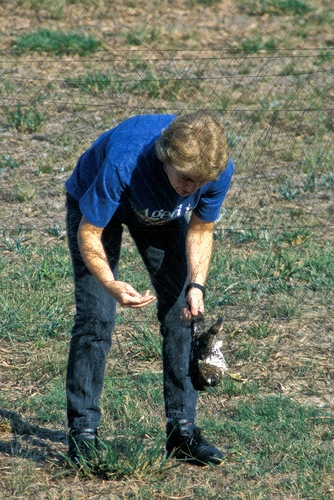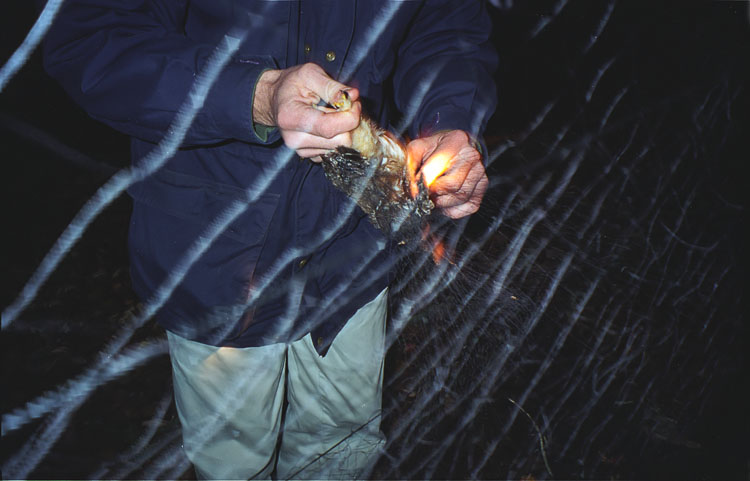the banding station
The semi-permanent blinds at long-running raptor banding projects like Cape May and Kiptopeke are constructed to hide the raptor bander, his helpers and their equipment. It also serves as a place to process the captured raptors in a relatively calm and protected environment. In the picture of the north banding station at Cape May you can see several of the active and passive traps used to catch hawks. The two most common traps used to capture raptors are mist nets (passive) and bow traps (active). The brief video below shows the layout of various traps at a typical raptor banding station in Cape May Point, NJ.
A panel of mist nets typically extends about six to seven feet in height and about 25 to 30 feet in length. They are often stacked vertically one above another to increase the chances of catching raptors flying a little above the deck of the trapping station. Mist nets may also be attached end-to-end and forming a closed triangular region with live or decoy lures placed at the center of the triangle to entice raptors into the nets. The picture below shows a raptor bander removing a Cooper's Hawk caught in a mist net.


Bow traps are sized for targeted species of raptor, i. e., a large bow trap for eagles and buteos and small bow traps for small accipiters and falcons. The video below shows a large bow firing over a pigeon lure in slow motion. This bow is used as the main trap in a banding station at Cape May Point, NJ and is capable of handling birds as large as Bald or Golden Eagles.
Similar bow traps, but smaller, using smaller lure birds are used to capture smaller raptors, such as, American Kestrels, Merlins, Sharpies and male Cooper's Hawks and can be sprung about a third faster than the large bow trap used for buteos and eagles.
More Than You Ever Wanted to Know About Raptor Banding
- About raptor banding
- What a typical raptor banding blind looks like
- How raptors are processed and banded
Other Useful Links
- Bird Banding Laboratory (BBL)
- Monitoring Avian Productivity and Survivorship (MAPS) Program
- Coastal Virginia Wildlife Observatory
- Mason Neck National Wildlife Refuge
- Mason Neck State Park
- Occoquan Bay National Wildlife Refuge
- Kiptopeke State Park